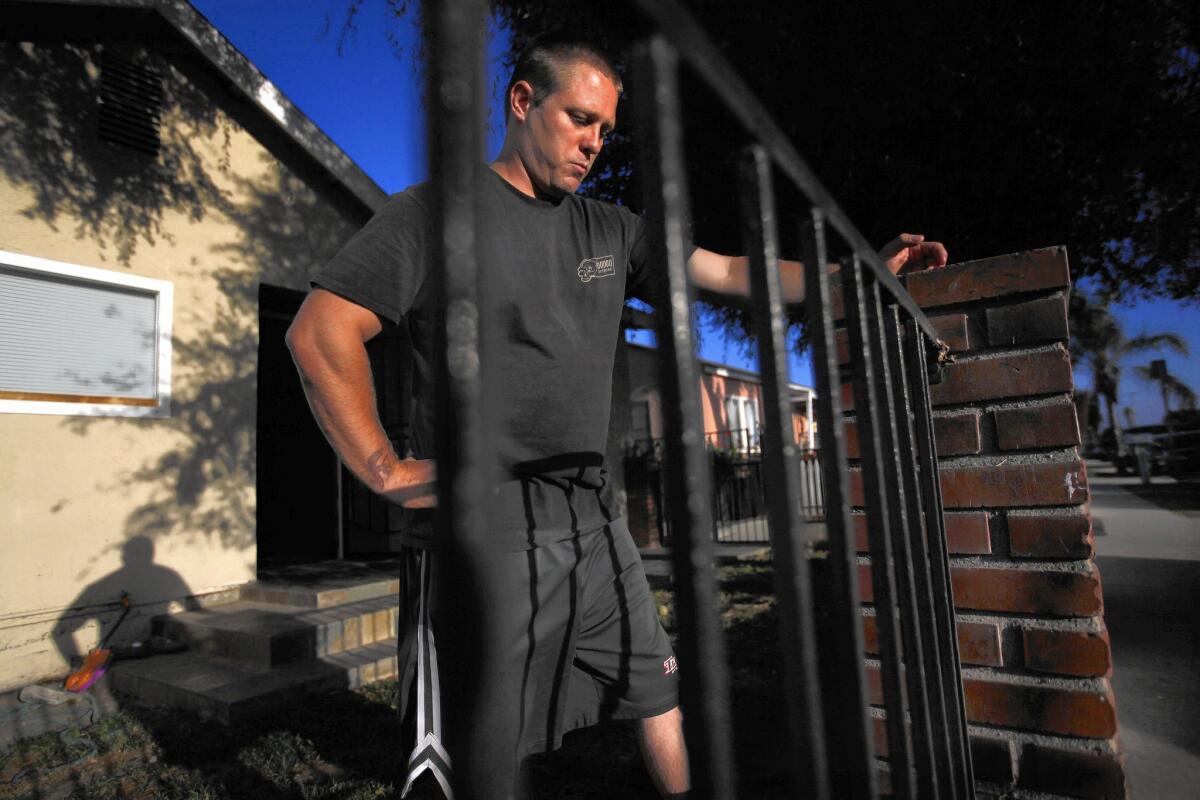EPA orders more air quality tests for homes near Superfund sites

- Share via
The U.S. Environmental Protection Agency has ordered a new round of air quality tests for a South Bay neighborhood after detecting a variety of contaminants inside homes near two federal cleanup sites.
The EPA sampled 107 homes near the Del Amo and Montrose Superfund sites earlier this year under pressure from residents worried they are breathing dangerous chemicals seeping in their homes from a plume of tainted groundwater below.
The tests detected pollutants associated with the cleanup sites, including benzene, chloroform and trichloroethylene, at levels above the agency’s health standards for long-term exposure.
The concentrations are not high enough to pose an urgent health risk to residents, said Dana Barton, who supervises the Superfund sites for the EPA’s regional office in San Francisco. “But we did find some levels of concern.”
Barton said some of the compounds could be from bathroom cleaners, painting supplies and other products in peoples’ homes, and others are probably coming from vehicle exhaust and refinery emissions in outdoor air.
“The question now for us is how much, if at all, the Superfund sites are contributing,” Barton said.
Cynthia Babich, a former resident who directs the neighborhood advocacy group Del Amo Action Committee, called the results “scary and confusing” and accused the EPA of “minimizing the chance that there could be a problem in the community.”
Worries over indoor air are only the latest environmental problems in this unincorporated community near Torrance. Residents have contended with decades of alarming discoveries, including soil laced with the pesticide DDT that led to the demolition of more than 60 homes and excavations of two dozen frontyards.
The neighborhood sits next to some of the nation’s worst chemical dumping grounds: the former Montrose Chemical Corp. DDT plant that operated from 1947 to 1982, the Del Amo synthetic rubber plant built by the U.S. government during World War II and other industrial operations. Over decades, the facilities dumped chemical waste into pits, ponds, trenches, sewers, stormwater channels and the Pacific Ocean.
Now, the EPA is overseeing a lengthy cleanup at the Montrose and Del Amo sites under its Superfund program. It has cost more than $48 million to date.
The recent testing was intended to find out whether volatile compounds in polluted groundwater is evaporating through the soil and into homes, a process called vapor intrusion.
Most concerning was the discovery of trichloroethylene, or TCE, in five homes. The industrial solvent pollutes groundwater in the neighborhood and other cleanup sites across the nation.
Recent scientific studies show that inhaling TCE poses a higher cancer risk than previously thought and can cause heart defects in developing fetuses. Those findings have brought new scrutiny from federal environmental regulators, who have launched investigations to search for TCE vapors at more than a dozen other Superfund sites in California.
In almost every South Bay home tested, the EPA detected benzene, chloroform and carbon tetrachloride — chemicals that were used or dumped at the old industrial sites — above its long-term screening levels for indoor air. About 20 of the homes had 1,2 dichloroethane and 1,4 dichlorobenzene and other volatile compounds at more than 100 times the EPA’s screening levels.
Concentrations above screening levels do not indicate an immediate health risk, EPA officials stressed, but they do warrant further investigation.
A 2010 EPA assessment found that vapors were migrating into commercial buildings that sit over the former Del Amo site, Barton said. More recent data have shown polluted groundwater growing shallower and closer to residents, with levels of TCE and other contaminants increasing below some homes.
Scott Hookey and his wife moved to the neighborhood last year. They had decided to try to have their first child and didn’t know the home they had rented was near two chemical waste sites.
NEWSLETTER: Get essential California headlines delivered daily >>
It wasn’t until a flier arrived in the mail over the winter that Hookey, a 31-year-old Marine Corps veteran and USC grad student, learned of concerns over potentially harmful vapors and arranged for their home to be tested. The EPA found TCE and other contaminants above long-term screening levels in a bedroom they planned to use as a nursery.
“We’ve had to rethink our plan of having a kid while we’re living here,” Hookey said. “We can’t do it.”
In addition to a second round of testing at about 40 homes later this year, the EPA said it will drill through driveways, concrete slabs and other surfaces throughout the neighborhood, inserting probes to search for soil gas that could be collecting underground.
Twitter: @tonybarboza
Hoy: Léa esta historia en español
ALSO:
Innovation is blooming at water-wise urban farms
Commission still trying to preserve affordable lodging along California coast
Judge throws out Beverly Hills man’s suit against city over probe into wife’s death







